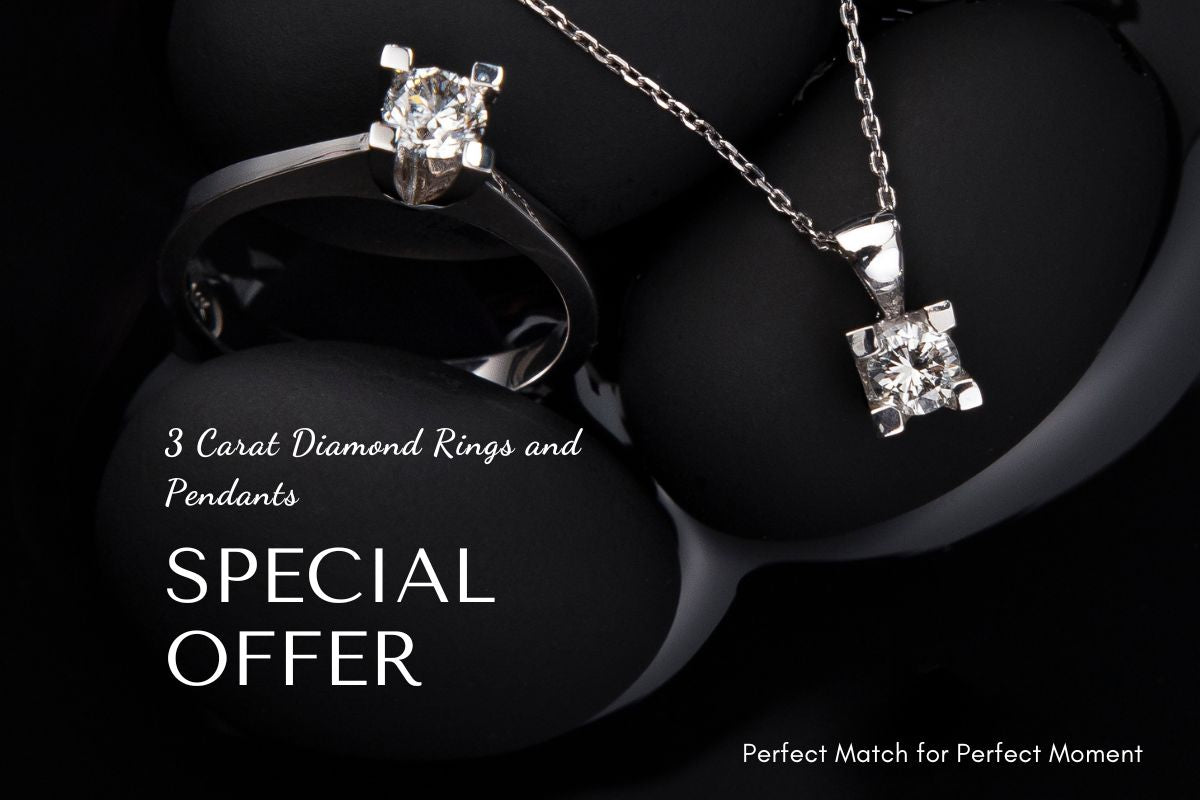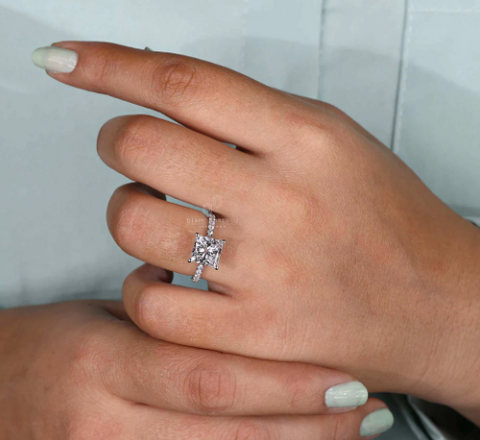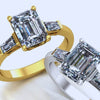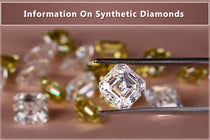When you're in the market for a 3 carat diamond, you're looking at a significant investment. Determining the worth of a diamond involves more than just its carat weight; it encompasses factors such as cut quality, color, clarity, and sometimes the specific shape of the stone. The value of a 3 carat diamond can vary greatly. High-quality 3 carat diamonds are both rare and desirable, which drives up their worth. The price can range from thousands to tens of thousands of dollars depending on the diamond's characteristics.
The carat weight describes the mass of the diamond, with one carat equivalent to 200 milligrams. While a higher carat number indicates a larger diamond, two diamonds of the same carat weight can have vastly different values. It's the interplay between the 4Cs—carat, color, clarity, and cut—that ultimately determines the price of the diamond. A 3 carat diamond with a flawless clarity grade and an excellent cut can command a premium price, whereas one with lower clarity and cut standards may be less expensive.
Table Of Contents
- Understanding Diamond Value
- Budgeting for a 3 Carat Diamond
- Purchasing a 3 Carat Diamond
- Selling a 3 Carat Diamond
- Differentiating Diamond Types
- Protecting Your Investment
- Conclusion
- Glossary
- References
- About the Author
- Acknowledgments
- Disclosure
- Related Articles
- Contact Us
- Terms of Use
- Privacy Policy
- Sitemap
- Search
- Frequently Asked Questions
Understanding the nuances of a diamond's value can be complex, but it's crucial when considering such a significant purchase. Remember, the unique combination of characteristics of each diamond makes up its worth, so a 3 carat diamond's price is not fixed and can only be accurately assessed on a case-by-case basis. To arrive at an informed decision, you should consider having the stone appraised by a certified professional.
Understanding Diamond Value
When considering the purchase of a 3 carat diamond, understanding the intricacies of valuation is paramount. Various factors intertwine to determine the final worth of a diamond, making it essential to examine each aspect closely.
Factors Affecting Diamond Prices
Diamond prices are influenced by a multitude of components including supply and demand, market conditions, and the perceptions of luxury and branding. Renowned retailers like Tiffany and online platforms such as James Allen and Blue Nile often add premiums based on their market position.
The 4 Cs of Diamonds
The 4 Cs—clarity, color, cut, and carat—are the primary determinants of diamond quality and consequently, its value. Higher clarity grades like VS2 or SI1 signify fewer inclusions, while a D color grade represents a colorless diamond.
Carat Weight and Its Impact
Carat weight directly impacts the price. Considering a 3 carat diamond specifically, the weight alone can significantly elevate its value due to its rarity. The price per carat typically increases as the carat weight goes higher.
Price Variations by Diamond Shape
Different diamond shapes such as princess cut or cushion cut can affect the price. Some shapes require more raw material or result in greater waste during cutting, projecting higher costs.
Understanding Diamond Certificates
A GIA certification ensures that a diamond meets strict standards for cut, color, clarity, and carat weight. Certificates from reputable organizations like GIA can increase a diamond's value.
The Significance of Clarity and Color
Clarity and color have a major influence on a diamond’s appearance and price. High clarity means fewer imperfections, while preferred color grades range from colorless to near-colorless.
Diamond Cut and Symmetry
The cut quality determines the stone's brilliance, fire, and sparkle. Excellent cut, symmetry, and polish can maximize a diamond's ability to reflect light properly, enhancing its overall beauty and value.
Market Analysis and Trends
The diamond industry is affected by global supply and demand, with trends influencing the desirability and cost of diamonds. Market dynamics can shift, altering the pricing landscape.
Price Per Carat Breakdown
Diamond prices often follow a price per carat system. As carat weight increases, so does the price per carat—not linearly, but exponentially, presenting a premium on larger stones.
Investment Value of Diamonds
Diamonds, particularly those of higher carat weights and exceptional quality, can be considered a form of investment. Their value may appreciate over time depending on their rarity and market demand.
The Impact of Retailers on Prices
Retailers can significantly mark up diamond prices, affecting affordability. While shopping for a diamond, understanding the baseline dollar value without retail markup can help you make a more informed decision.
Budgeting for a 3 Carat Diamond

When considering the purchase of a 3 carat diamond, understanding the financial investment is crucial. From average costs to hidden fees, budgeting requires attention to detail to ensure you're making a wise decision.
Average Cost Expectations
Average Costs: Apprehend that 3 carat diamond prices can significantly vary. They typically range between $20,000 and $100,000, influenced by the Four Cs: cut, color, clarity, and carat weight. Price per carat generally increases with size due to the rarity and desirability of larger diamonds.
Diamond Price Calculators
Utilize diamond price calculators available on expert jewelry sites to obtain an estimated cost. These tools can provide a more personalized price, considering specific attributes like diamond quality and carat weight. Remember, such calculators require a level of expertise to use effectively, as you must input accurate diamond quality parameters.
Maximizing Your Budget
To maximize your budget, prioritize which of the Four Cs are most important to you. Shopping around and comparing prices from multiple retailers is key. Opt for a diamond that balances size with quality within your price range, and seek certification to validate the diamond's attributes.
Hidden Costs and Considerations
Be mindful of hidden costs, which can include settings, sales tax, and insurance. Returns and warranty policies differ across retailers, so assess these facets before purchasing. Note that diamonds undergo extensive marketing and certification processes which can affect their cost. Always factor in these potential expenditures to the total budget.
Purchasing a 3 Carat Diamond
When you're in the market for a 3 carat diamond, understanding the nuances of quality, retailer options, and customization can lead you to make a confident purchase. The key is to balance the diamond's characteristics with the trustworthiness of retailers to ensure the value of your investment.
Where to Buy
There are various retailers and jewelers where you can purchase a high-quality 3 carat diamond. Online options like Blue Nile and James Allen offer a wide selection with detailed information about their diamonds. Alternatively, luxury brands such as Tiffany provide a premium shopping experience and assurance of quality but often at a higher price point. Always look for a GIA certificate to validate the diamond's authenticity.
Choosing the Right Diamond
The value of a diamond is determined by its quality, which is assessed through clarity, color, and cut. Clarity refers to the absence of inclusions or blemishes. Color is graded from colorless to yellow, with colorless being the most rare and valuable. Cut impacts the brilliance of the diamond and is one of the most crucial aspects to consider. Reference the GIA certificate for an unbiased assessment of these features.
Customization and Engagement Rings
If you are purchasing a diamond for an engagement ring, consider the customization options available. James Allen and Blue Nile allow you to choose the metal and design for a personalized touch. Whether opting for a classic solitaire or a more elaborate setting, the cut of your diamond should complement the design to enhance its appearance.
Understanding Diamond Retailers
Retailers vary in terms of pricing, selection, and shopping experience. Luxury retailers like Tiffany are synonymous with high-end quality and often come with a significant markup. Online retailers typically provide a more cost-effective option and greater transparency with tools to view diamond details and certificates.
Securing the Best Deal
To secure the best deal, approach the purchase with a mindset of bargaining and maximization of value. Compare the price and quality across different retailers, and don't hesitate to ask for price matches or negotiate add-ons. Keep an eye out for promotional periods or discounts when online retailers may offer better prices on their inventory.
Selling a 3 Carat Diamond
When you decide to sell a 3 carat diamond, knowing its value and understanding the market is crucial. To achieve the best price, familiarize yourself with industry standards, prepare your diamond for presentation and be ready for negotiation.
Assessing Diamond Value for Resale
The resale value of your 3 carat diamond depends on its quality and market demand. Factors such as cut, color, clarity, and carat weight, known as the 4 Cs, play a significant role in determining value. Reference the GIA certificate, which provides an authoritative assessment of these quality factors. Similarly, the diamond's condition and any brand association can also impact the valuation.
Tips for Successful Selling
For successful selling, presentation and marketing are key. Ensure your diamond is cleaned and well-presented. High-quality photos and a detailed description can attract potential buyers if you're selling online. Understand the selling points of your diamond, such as a high-quality cut or a rarity of color, to market effectively. Choose a reputable retailer or platform that specializes in diamonds to reach the right audience.
The Role of Appraisals and Certifications
Appraisals and certifications are critical for substantiating the diamond price. Obtain an updated appraisal to ensure your asking price aligns with the current market. Your diamond’s GIA certificate is valuable; it not only confirms the diamond's authenticity but also reassures potential buyers about the quality they are investing in. Certification from a recognized authority adds legitimacy to your sale and can facilitate a smoother transaction.
Negotiating with Buyers
Negotiation is a part of the selling process. Be informed about the lowest price you're willing to accept for your diamond. Research current market prices for 3 carat diamonds to set a realistic yet competitive price. Maintain a neutral stance during negotiations and provide justifications for your price based on the diamond quality and accompanying certification. Being knowledgeable will help you to negotiate more effectively with individual buyers or jewelers.
Differentiating Diamond Types
| Diamond Type | Formation | Color | Clarity | Size | Cost | Additional Characteristics |
|---|---|---|---|---|---|---|
| Natural Diamonds | Formed naturally over millions to billions of years under high pressure and temperature deep within the Earth's mantle. | Varies widely, including colorless, near-colorless, and fancy colors. | May have natural inclusions and blemishes, graded on a scale from Flawless to Included. | Available in various sizes, with larger diamonds being more rare and valuable. | Generally more expensive due to the rarity and natural formation process. | Each diamond has a unique geological history, contributing to its individual value. |
| Lab-Grown Diamonds | Created in a laboratory using high-pressure, high-temperature (HPHT) or chemical vapor deposition (CVD) methods. | Can be produced with controlled color, often in the colorless to near-colorless range. | May have fewer or no inclusions compared to natural diamonds, offering more control over clarity. | Available in various sizes, and larger diamonds may be more accessible. | Can be more affordable compared to natural diamonds, depending on the production method and quality. | May have distinct growth patterns or features indicating their synthetic origin. |
| Enhanced Diamonds | Natural diamonds that undergo treatments to improve color or clarity. | Varies, as enhanced diamonds can include a range of colors. | May have undergone treatments to reduce or remove inclusions, improving clarity. | Available in various sizes, with larger diamonds being more rare and valuable. | Cost varies based on the extent of enhancement and resulting quality. | Enhancements should be disclosed, and the value depends on the degree of improvement. |
| Simulated Diamonds | Not true diamonds; they imitate the appearance of diamonds but have different compositions. | Varies, but often lacks the range of colors found in natural or lab-grown diamonds. | May lack the natural inclusions found in diamonds, appearing clearer. | Available in various sizes; cost depends on the material used for simulation. | Generally more affordable than natural or lab-grown diamonds. | Materials like cubic zirconia, moissanite, or white sapphire are commonly used. |
When considering the worth of a 3 carat diamond, you must understand that not all diamonds are created equal. Factors such as whether a diamond is lab-grown or natural, its rarity, treatments, and individual character greatly influence its value.
Lab-Grown vs. Natural Diamonds
Lab-grown diamonds have become more prevalent in the market, offering a more affordable and ecologically conscious alternative to natural diamonds. They share the same chemical and physical properties as natural diamonds but are created in a controlled environment. These stones tend to cost less than their natural counterparts due to the differences in supply and demand, as well as the perceptions of rarity and uniqueness.
Effects of Diamond Rarity
The rarity of a diamond is a pivotal factor in determining its worth. Natural diamonds of high quality and 3 carats in size are rare, and this scarcity amplifies their price. The laws of supply and demand play a crucial role here; the fewer there are on the market, the higher the value they command. Rarity goes hand-in-hand with a diamond's value, heightening its beauty and presence.
Understanding Diamond Treatments
Many diamonds undergo treatments to enhance their quality. These treatments can improve diamond clarity and color, but they may affect the stone's value. It's essential to be informed about any treatments, as they should be disclosed, and they can affect price transparency. Untreated diamonds are often more highly valued for their natural state.
Selecting a Diamond with Character
Finally, selecting a diamond is about more than just its intrinsic qualities; it’s about finding a stone with character that resonates with you. Whether it's the unique inclusions of a natural diamond that tell a geological story, or the specific hue and brilliance that evoke an emotion, your choice should be a reflection of what you find truly beautiful and unique. Each diamond's uniqueness adds to its allure and can be a testament to its timeless beauty.
By factoring in these elements, your understanding of what makes a 3 carat diamond valuable becomes clearer, guiding you to make a choice that suits your preferences and budget.
Protecting Your Investment

When investing in a 3 carat diamond, it is crucial to consider not only the initial cost but also the strategies for preserving its value and ensuring its longevity. Understanding the facets of insurance, maintenance, and its potential as an heirloom can help safeguard your high-value gemstone.
Insurance for High-Value Diamonds
Securing your investment starts with finding the right insurance policy. Your 3 carat diamond, likely a significant purchase, should have coverage that parallels its worth. When selecting a policy, pay special attention to the premiums and the specifics of coverage, including theft, loss, and damage. Ensure that you have documentation such as an appraisal to verify its value.
Maintenance and Care
Regular maintenance and care are essential for preserving the quality and durability of your diamond. Routine cleaning by professionals can prevent the buildup of dirt and oil that diminish a diamond's sparkle. It's equally important for you to handle your diamond jewelry with care; store it in a fabric-lined jewel box to avoid scratches and damage from impacts.
Long-Term Value and Heirloom Potential
A 3 carat diamond holds not just monetary but emotional and significance value, potentially becoming a cherished heirloom. To maintain its long-term value, consider the diamond's quality and how it fits into prevailing fashion. Higher-quality diamonds are typically more sought after for passing on through generations. Document its history and significance, as this can enrich its emotional value, making it even more special to those who inherit it.
Conclusion
When assessing the value of a 3 carat diamond, several factors come into play. Not only do the 4Cs—cut, clarity, color, and carat weight—dictate the worth, but so does the diamond's provenance and the market demand for luxury items. It is crucial to remember that diamonds are more than just financial investments; they often hold deep emotional significance for their owners.
- Emotional Value: The joy and sentiment a diamond can carry may far exceed its monetary value.
- Investment Potential: As with any high-value asset, a diamond's long-term investment return can vary, but quality pieces often maintain or appreciate in value.
- Luxury Status: Owning a 3 carat diamond places you in an exclusive category of luxury connoisseurs.
- Market Variables: Prices fluctuate based on market conditions, so timing can influence value.
Your diamond's value is also contingent upon its rarity and desirability. Exceptional 3 carat diamonds, especially those with a high grade in cut, color, and clarity, can command premium prices. When making a purchase or evaluating a diamond you already possess, consult with certified gemologists and consider obtaining an appraisal. The resources available, such as the book "How to Buy a Diamond," can guide you through the complexities of valuation.
In summary, a 3 carat diamond represents a confluence of luxury, significance, and investment. While its market value can be estimated, its worth to you may reflect a unique blend of financial consideration and personal attachment.
Glossary
Before diving into the valuation of a 3 carat diamond, it's important to familiarize yourself with key terminology used in the diamond industry. Understanding these terms will help you navigate the complexities of diamond valuation.
Key Terms in the Diamond Industry
| Term | Description |
|---|---|
| Carat | A unit of weight for diamonds and gemstones, with one carat equal to 200 milligrams. |
| Cut | Refers to how well a diamond has been shaped and faceted. Cut quality affects the diamond's brilliance and sparkle. |
| Color | Grades the absence of color in a diamond, with a scale ranging from D (colorless) to Z (light color). |
| Clarity | Evaluates the presence of internal and external flaws (inclusions and blemishes) in a diamond. |
| Certification | A document provided by gemological laboratories detailing the characteristics of a diamond, including the 4 Cs. |
| Brilliance | The intensity of the light reflected from the surface and interior of a diamond, contributing to its sparkle. |
| Inclusion | Natural internal characteristics or flaws within a diamond, affecting its clarity. |
| Facet | Flat, polished surfaces on a diamond that contribute to its brilliance by reflecting and refracting light. |
| Table | The largest facet on the top of a diamond, which influences its appearance and light performance. |
| Girdle | The outer edge or perimeter of a diamond, separating the crown (top) and pavilion (bottom). |
| Culet | The small facet at the bottom of a diamond's pavilion, designed to prevent damage to the tip. |
| Fancy Color | Diamonds with colors beyond the traditional color range, including various shades of yellow, brown, and rare colors like blue, pink, and green. |
| Fluorescence | The visible light emitted by some diamonds when exposed to ultraviolet (UV) light, described as none, faint, medium, strong, or very strong. |
| Fire | The dispersion of light into different colors as it passes through a diamond, creating a play of colors. |
| Rough Diamond | An uncut, unpolished diamond as it is extracted from the earth or mine. |
The diamond industry refers to all parts of the diamond supply chain, from mining and cutting to trading and retailing. It is governed by standard practices but also affected by market demands, rarity, and consumer preferences.
References
When assessing the worth of a 3-carat diamond, understanding the credibility and authority of your information sources is crucial. This section will guide you on where to gather reliable data for an informed valuation.
Sources of Diamond Knowledge
Your primary reference should be the Gemological Institute of America (GIA), which is the leading authority when it comes to diamond grading. A GIA certification can provide you with a professional and accurate assessment of a diamond's quality, covering all aspects, including cut, color, clarity, and carat weight, which are essential for determining the stone's value.
Experts and gemologists within the diamond industry play a significant role in evaluating diamonds. Their expertise is often backed by years of experience and formal education. Consulting with reputed jewelers is advisable, as they can offer valuable insights into current market trends and pricing.
Remember, the worth of diamonds is also subject to market dynamics. Stay informed by referencing trade publications and attending industry events which can provide real-time updates on diamond valuations.
About the Author

Your understanding of the value of a 3-carat diamond will be enriched by insights from a proficient authority on the subject. The author's proficiency in the industry is backed by credible credentials and years of experience, ensuring reliable information.
Expertise and Credentials
- Area of Expertise: Diamond valuation and gemology
- Qualifications:
- Graduate Gemologist (G.G.) from the Gemological Institute of America (GIA)
- 20+ years of experience in the diamond industry
- Frequent speaker at international gem and jewelry conferences
Contact Information
- Email: diamondexpert@email.com
- Phone: +1 (234) 567-8901
- Office Hours: Monday - Friday, 9 AM - 5 PM (EST)
Other Works and Publications
- Books Published:
- "Understanding Diamond Valuation," a comprehensive guide on diamond appraisal
- "The Diamond Market Handbook," insights into global diamond trade
- Selected Articles:
- "The Impact of Carat Weight on Diamond Pricing," featured in Gems & Gemology Journal
- "Grading the Ungrabbable: Assessing a Diamond's True Worth," an article in Diamond Monthly Review
Acknowledgments
When determining the value of a 3 carat diamond, it's important to recognize the contributions that experts and specialists provide in this field.
- Experts & Valuers: Your understanding of diamond value is refined by professionals who assess quality based on the four Cs: Carat, Cut, Color, and Clarity. Their expertise is indispensable for an accurate valuation.
- Collaborators: Collaborative efforts between gemologists, diamond cutters, and market analysts ensure that you receive a well-rounded perspective on current market values and trends.
- Mentorship: Mentors play a crucial role in the diamond industry by sharing knowledge and experience that guides you through complex valuation considerations, such as the diamond's provenance and its impact on worth.
- Assistance: The final valuation also benefits from a range of support staff, from miners to jewelers, whose collective efforts bring these coveted stones to market.
Remember, the value of a diamond doesn't just reflect its physical properties, but also the meticulous work and collaboration of a network dedicated to bringing forth its full potential.
Disclosure

When considering the purchase of a 3 carat diamond, transparency and honesty in disclosure are paramount. The value of such a gemstone is influenced by several factors beyond just its carat weight. Jewelers and diamond sellers are ethically obliged to provide you with a complete disclosure of the diamond's attributes, which encompass the 4Cs: Carat, Color, Clarity, and Cut.
- Carat Weight: This is the measure of the diamond's weight, not its size. A 3 carat diamond is equivalent to 600 milligrams.
- Color: The lack of color elevates a diamond’s value. Color is graded from D (colorless) to Z (light yellow or brown).
- Clarity: Natural imperfections, known as inclusions, affect a diamond's clarity. Clarity grades range from Flawless (FL) to Included (I).
- Cut: The quality of the cut influences the diamond's brilliance and is graded from Excellent to Poor.
Ethical standards require sellers to present a certification from recognized grading entities such as the GIA (Gemological Institute of America) or AGS (American Gem Society). This certification ensures that the diamond has been independently assessed.
The price of a 3 carat diamond varies significantly based on the above factors. For example, a 3 carat diamond with high clarity, an excellent cut, and a color grade of D might be valued higher than one with a lower clarity grade, a fair cut, and a color grade of H.
Your decision should be informed by a comprehensive understanding of these factors, keeping in mind that disclosure is key to determining the right investment for your desires and expectations.
Related Articles
Navigating the complexities of diamond shopping, especially when looking for something as significant as a 3 carat stone, requires solid information. This section aims to guide you through carefully selected reading material that can enhance your understanding of diamond quality and assist you in making an informed decision about engagement rings or any other diamond-related purchase.
Recommended Reading
-
Understanding Carat Weight: Learn the intricacies behind the weight measurement that plays a vital role in determining the value of a diamond. The article "Investing in Diamonds" offers insights into how diamonds are priced according to their carat weight, a crucial element when considering 3-carat diamonds.
-
Insider Secrets Revealed: For those who want a deep dive into the factors that contribute to a diamond's worth, "How to Buy a Diamond: Insider Secrets for Getting Your Money's Worth" can provide extensive knowledge to navigate the market effectively.
Make sure to absorb the information from these articles to enhance your capacity for making informed decisions when shopping for diamonds.
Contact Us

For personalized assistance regarding the value of 3 carat diamonds or any related inquiries, our team of experts is at your service. Whether you need technical support for website issues, feedback mechanisms, or a scheduled consultation, we are here to provide clear and effective communication.
Feedback and Inquiries
Feedback: Your opinions are invaluable to us. Please submit your feedback using the form on our Feedback Page.
- Inquiries: If you have questions or require more information, send us an email at inquiries@diamondvalueexperts.com or use the Contact Form. A representative will respond within one business day.
Technical Support
Encounter a problem on our website or need technical assistance? Contact our Technical Support Team directly.
- Email: support@diamondvalueexperts.com
- Phone: 1-800-555-DIAMOND
Our technical support team is available 24/7 to ensure your experience is seamless.
Consultation Services
For professional advice on diamond valuation:
- Schedule an Appointment: Book a one-on-one session with our certified jewelers through the Consultation Scheduler.
- Expertise: Gain insights from industry leaders with years of experience in diamond appraisal.
Reach out today to utilize our expertise for a confident understanding of your diamond's worth.
Terms of Use
When considering the purchase of a 3 carat diamond, it's critical to familiarize yourself with the Terms of Use of the website or service from where you intend to make your purchase. These terms will outline the legal parameters of your transaction, including but not limited to, warranties, return policies, and liabilities.
- Warranties: Look for clauses that guarantee the authenticity and quality of the diamond.
- Returns: Understand the conditions under which a return is accepted and any restocking fees that may apply.
- Liabilities: Identify any disclaimers limiting the seller's liability for certain damages or loss.
The website terms will guide your use of the platform, such as the acceptable modes of communication and any user conduct guidelines in place. Compliance with these is essential for a smooth transaction.
- User Conduct: Act in accordance with the site's regulations regarding reviews, comments, and engagement with other users and the seller.
The conditions section articulates the prerequisites for fulfilling the transaction. This may pertain to the payment process, shipping policies, and insurance coverage for the diamond en route to you.
- Payment Process: Follow the specified procedures for making a payment to ensure the security of your transaction.
- Shipping Policies: Know who bears the responsibility for the diamond while in transit.
It is imperative that you read these terms thoroughly before committing to a purchase. Understanding the scope and limitations of the agreement helps protect your investment and ensure that you make an informed decision.










